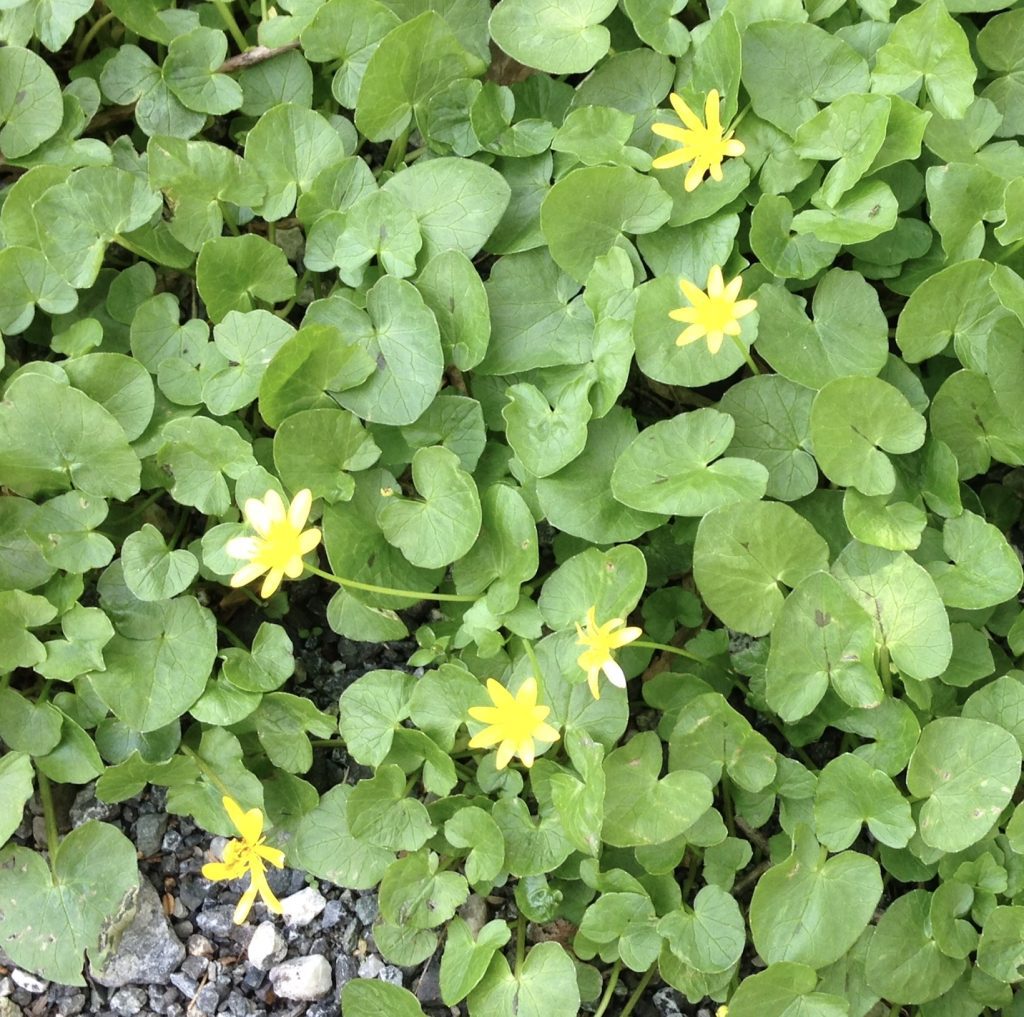You might have seen a lot of a groundcover with yellow flowers growing in yards and gardens, as well as along creeks and streams in the area. Some of it may have even appeared in your lawn or gardens. If you look closely, you’ll notice that the flowers are star shaped and the leaves resemble green hearts.
This is lesser celandine (Ficaria verna, also known as Ranunculus facaria). It looks pretty and adds color to a dull landscape, but it spreads very quickly and I've seen it take over more than any other invasive plant over the past seven years.
I wrote about this plant in April 2019 and last spring, and I may write about it every year in the hope of helping you prevent it from taking over your yard. So, here we go again!
The basics:
Where did this plant come from?
According to the PennState Extension website, lesser celandine is native to parts of Europe, Asia, and northern Africa, and was brought to North America as an ornamental plant in the 1800s. It has since become widespread in the northeastern and mid-western United States. It is most commonly found in floodplains, moist lowlands, and riparian areas near bodies of water, but can also be found in upland areas with drier soils. It is known to thrive in sandier soils and heavy clay soil.
How do you get rid of it?
This plant is a “spring ephemeral,” and dies back soon after it finishes flowering. But it's important to note that it's not completely gone. You can remove it by digging up the roots and making sure to remove the small “bulblets,” which is one of the main ways the plant reproduces. Cutting the leaves to prevent nutrients from reaching the roots can also be helpful. The primary recommended method is to use glyphosate. However, it's important to note that not everyone agrees on whether this substance is carcinogenic. If you do use glyphosate, be sure to follow all the precautions listed on the label.
When I first noticed lesser celandine in my yard, I reached out to the PennState Extension office for advice. They suggested using Roundup® (which contains glyphosate as the active ingredient). When I inquired about using a diluted vinegar solution, I was advised against it because “Vinegar will destroy the soil biome.” Regardless, I decided to use vinegar and had to deal with the resulting bare patches. The following year, the grass had grown back, along with the lesser celandine.
What do I do if it’s in my lawn?
I found out that in lawns, where the goal is to kill the plants but not the grass, it's recommended to use a broadleaf herbicide instead of glyphosate, which kills everything. I wasn’t thrilled about these products any more than Roundup®. However, after further research, I found recommendations to try an iron-based herbicide. Information from the University of Nebraska states that “Most broadleaf herbicides contain 2,4-D, and/or Dicamba. Iron (Fe) … is a safer alternative that doesn’t volatize or move once it’s on the plant.” (https://turf.unl.edu/turfinfo/8-22-iron-herbicide-alternative.pdf)
Since the yellow fig buttercup grows well in more acidic soils and turf grass prefers a neutral pH, applying lime to a lawn might help manage the plant. There is no information proving this, but because the soil in our area tends to be acidic, it would be a good idea to test your soil and use lime if it has a low pH.
Pam Baxter, an enthusiastic organic vegetable gardener residing in Kimberton, can be contacted via direct e-mail at [email protected], or by sending mail to P.O. Box 80, Kimberton, PA 19442.









